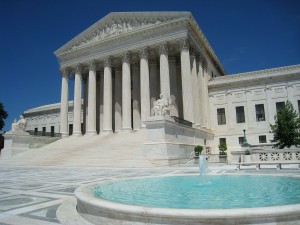Debunking the Refine of Federal Appeals: What You Required to Know
Navigating the elaborate realm of federal appeals can frequently look like going across uncharted waters for those unknown with the procedure. Recognizing the nuances of appellate court territory, the complexities of filing a notice of allure, presenting a compelling quick, and making a persuasive dental disagreement are important elements that can considerably affect the end result of a situation. By untangling the layers of intricacy surrounding government appeals, individuals can gain a more clear insight right into the mechanisms that control this critical point of the lawful system.
Comprehending Federal Appeals Process
Exploring the intricate world of the government charms process reveals a methodical and structured trip with the judicial system. Federal charms act as an essential device for evaluating decisions made by lower courts. Understanding this procedure is important for any individual associated with legal process at the government degree.
The procedure usually starts with an event disappointed with a lower court's judgment filing a notification of charm. This triggers a review by a higher court, where a panel of judges analyzes the legal debates provided by both celebrations. Briefs detailing the legal reasoning behind each party's placement are sent, and oral debates might be heard to clear up intricate concerns.
The appellate court's choice is based on a complete exam of the reduced court's process and the debates presented. The judges do not concentrate yet reconsider truths on whether lawful errors took place that impacted the reduced court's choice. When the appellate court reaches a choice, it can attest, turn around, remand, or customize the reduced court's ruling, supplying quality and finality to the legal disagreement. Recognizing this procedure is important for browsing the intricacies of federal appeals successfully.
Appellate Court Territory Explained
Appellate court territory refers to the scope of instances that a particular appellate court has the power to examine and make a decision upon. Unlike trial courts that hear situations for the initial time, appellate courts are restricted to assessing decisions made by reduced courts.
Appellate courts have jurisdiction over details kinds of situations, commonly those involving legal errors, procedural problems, or questions of legislation rather than factual conflicts. The jurisdiction of appellate courts is typically outlined in laws and regulations that regulate the court system. Recognizing appellate court territory is crucial for parties involved in the appeals process as it identifies whether a case is eligible for evaluation and the extent to which the appellate court can interfere in the reduced court's decision.
Declaring a Notice of Charm
The first action in beginning the government charms process entails submitting a Notice of Allure with the appropriate appellate court. This important record officially alerts the court and the other events associated with the case that the appealing party means to look for an evaluation of the lower court's choice. Filing a Notice of Allure is a strict procedural requirement that establishes the appellate procedure in movement.
When preparing the Notification of Charm, it is important to make certain compliance with the details regulations and standards of the appropriate appellate court. federal crime attorney. The paper has to usually include information such as the case name, the lower court's name, the day of the judgment being appealed, and a concise statement showing the grounds for the charm

Instruction and Oral Debate
In the appellate process, presenting created briefs and participating in dental arguments play essential functions in supporting for the appealing celebration's placement prior to the appellate court. Briefs are comprehensive lawful papers that outline the parties' disagreements, lawful authorities, and evaluation sustaining their settings. These created submissions provide the court with a comprehensive understanding of the realities of the situation, the pertinent legislation, and why the appealing party thinks the lower court's choice should be overturned.
Adhering to the entry and review of the briefs, oral arguments use the celebrations an opportunity to more clarify their placements, address any inquiries the appellate courts may have, and emphasize key points from their written briefs. Oral debates are a possibility for the attorneys to encourage the judges through spoken advocacy and actions to inquiries from the bench.
Both the written briefs and oral disagreements are crucial parts of the appellate process, enabling parties to provide their instance extensively and compellingly before the appellate court. - federal appeal attorneys
Obtaining the Appellate Court Decision
Upon completion of dental arguments and entry of written briefs, the following crucial phase in the appellate process entails waiting for the definitive ruling from the appellate court. This period of expectancy can be loaded with a mix of anxiousness and wish for events involved in the charm. The appellate court's choice is commonly supplied in a created layout and details the court's final thoughts on the lawful concerns offered, the thinking behind their decision, and the judgment provided. The time frame for getting the appellate court's choice can differ, but courts make every effort to provide prompt resolutions. As soon as the choice is provided, celebrations need to very carefully evaluate the court's ruling to recognize the outcome and establish any type of additional steps that may be necessary. Whether the appellate court verifies, reverses, or remands the reduced court's decision, comprehending the effects of the ruling is crucial for all parties entailed in the appellate procedure. Therefore, promptly reviewing and comprehending the appellate court's choice is crucial in navigating the following action in the lawful proceedings.
Final Thought
Understanding the appellate court jurisdiction, filing a notice of appeal, preparing briefs, and offering oral disagreements are all crucial components of this procedure. Ultimately, obtaining the appellate court decision can provide clarity and resolution to legal disagreements.
As we progress from comprehending the government allures procedure to studying the complexities of appellate court territory, a fundamental facet comes to light pertaining to the authority and limitations of these higher courts in the legal landscape. Appellate court territory refers to the scope of situations that a particular appellate court has the power to make a decision and review upon. Unlike test courts that listen to instances for the initial time, appellate courts are limited to examining choices made by reduced courts. Comprehending appellate court territory is critical for celebrations involved in the allures process as it establishes whether a case is eligible for review and the extent to which the appellate court can interfere in the lower court's choice.

Comments on “Leading Federal Appeal Attorneys: Your Companions in Browsing the Appeals Process”